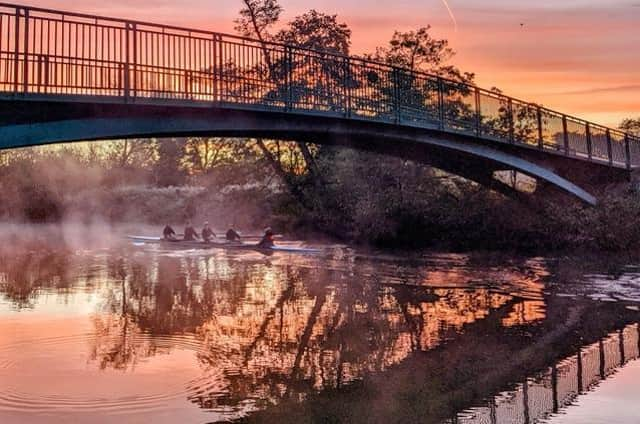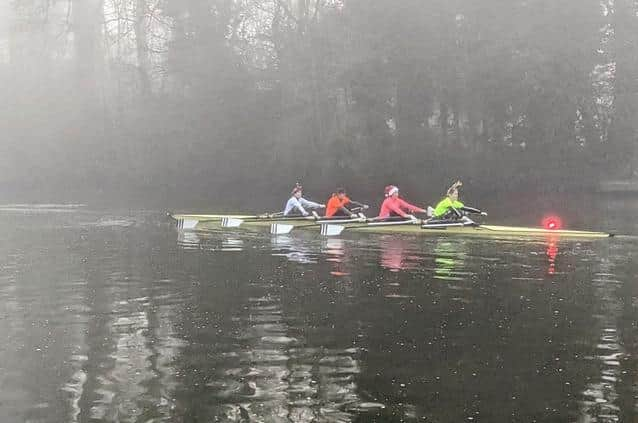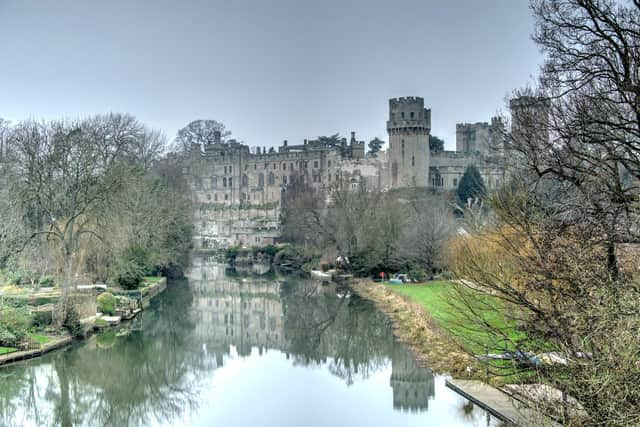Four seasons on Warwick's River Avon: Rowing in an unspoiled winter wonderland


The Warwick Boat Club ‘Old Blades’ is an informal collective of rowers who have been rowing members for more than 25 years. Over four articles, they will be raising awareness of the unique nature of the beautiful River Avon, covering each season on the river. Here is their January article on rowing in an unspoiled winter wonderland on the Avon.
Winter on the Avon
‘Earth has not anything to show more fair’. These words by William Wordsworth about the City of London from Westminster Bridge could well be applied to the view of the castle from our own bridge in Warwick.


Advertisement
Hide AdAdvertisement
Hide AdThis postcard image, Bridge End nestling to the left, the banks of Warwick Boat Club on the right with the castle dominating the river in the middle, is what most of us tend to think of when picturing the upper reaches of the Avon at Warwick.
While not ‘navigable’, this stretch of river is wide enough to cater for a host of small river craft, which can enjoy the same scene from a closer water-level perspective.
Few of these craft are out over these winter months as the cold discourages the hire boats, paddle boarders and even the occasional swimmer, but the rowers, some canoeists and the occasional fisherman can still be spotted enjoying the river.
For the rowers, this is the ‘Head of the River’ season, when side by side regatta sprints give way to longer distance rowing. These ‘Heads,’ as they are colloquially referred to by rowers, are timed processional events with boats setting off one after another over a course of around 20 minutes.


Advertisement
Hide AdAdvertisement
Hide AdOnly when you get to Evesham is the river substantial enough to host one of the many regional Heads around the country. The biggest national Head is rowed over the Boat Race course (in reverse), with hundreds of crews rowing for the fastest time in their category the weekend before the annual Oxbridge match.
Warwick’s rowers will be out over the winter, training for the Head season on the river from the dilapidated medieval bridge above the castle, which is about as far as you can go before the weir threatens to engulf you, up to the point where the River Leam joins the Avon, near the old Potterton’s site just downstream from Rock Mill, which was the site of the original Warwick Boat Club founded in 1861. This is a distance of about 2km, and rowed in both directions is a good simulation for a Head.
These hardy athletes turn up in all weathers for their allotted outings but winter rows can be amongst the most satisfying of all. From launching the boat from the pontoon below the bridge, occasionally having to break thin ice at the bank, the rowers will ‘warm up’ on their way upstream to the ‘top’ where they turn and come down again, usually having taken off an outer layer of clothing.
Initial exercise complete, they can enjoy a medium-paced warm-up row through the fairy land of white frost on overhanging branches, the air still and crisp.
Advertisement
Hide AdAdvertisement
Hide AdEven in these cold conditions they are not alone, occasional witnesses to otter footprints or the flash of turquoise as a king fisher darts away. More commonly observed is a serene swan, the statuesque sentinel heron within a few feet of the boat, or a solitary goose gliding through the freezing fog, rhythmically coughing out small puffs of condensed breath as it goes.
Perhaps the most ubiquitous company are the fishermen. Sometimes, heron-like, is an isolated figure on the shore, whilst on other occasions it’s a packed riverbank when a competition is being held. The best places to fish are just off the main current (inside the bends are a favourite), or areas of slack water, mostly for roach and bream. Bream of up to 9lbs have been caught, which is big for a river. Predators (pike mainly) are also fished. Carp too are present, up to 30lbs, but more usually not targeted in the winter. The fishermen prefer solitude, but other boats are rare at this time of year and pass by quickly, with a brief lift of the rod by the fishermen to avoid getting a line snagged.
Having returned to the bottom of the river, just above the castle, the rowers turn again and prepare for the simulated head. Cold again as all outer layers are removed, and blowing on cold hands to warm them up, they check their seat slides are running smoothly and the gates holding their oars are tight before they begin a fast paced row at Head racing speed up the river. Less time to observe the winter wonderland now, all eyes are looking ahead as the castle recedes behind them and they row past St Nicholas Park with morning dog-walkers in heavy coats on the footpath.
In the rhythm now, they approach Charter Bridge and the narrower section of the upper reaches, all striving for a single sound of the punch as the blades (oars) hit the water in unison at the start of the stroke, sitting up as the workload transfers from legs to back and then a single thwack as they all release their oars leaving neat round puddles in their wake, striving with each stroke to maximise
Advertisement
Hide AdAdvertisement
Hide Adthe distance between the receding puddles behind them. This is the most skillful part, keeping a perfectly balanced boat while controlling the speed at which they come up the slide with blades all evenly out of the water till they unfeather them together, ready for the next stroke.
The coxes also have their part to play, and not inconsiderable skill is required to steer a boat at full speed through the tightest bends. Local river knowledge and confidence that the crew can execute a prompt emergency stop are essential tools of the trade but, in the solitude of winter, the need to stop suddenly is rare so it’s all about aligning the boat into the bend and then using the stream to
minimise the necessity for one side to be ‘backing off’ or worse ‘holding up’ to help steer the boat.
Needless to say, the admittedly more nimble, coxless boats present further challenges for a clean line though the bends.
Advertisement
Hide AdAdvertisement
Hide AdAt the top, the rowers turn as fast as possible and set off back down again, the glacial calm of the river is briefly interrupted by the boat, followed by the puddles from the blades, losing their strength as the eddies spread out across the river and finally die away completely, long after the boat has disappeared.
Approaching the road bridge at the bottom, the pace is increased to the end, tired legs and bodies pushing out the last bit of effort. Keeping the boat discipline is harder now as tiredness prompts small errors until the flag post finish at the Boat Club and the relief of the wind-down. The boat is then turned again before the crew can rest properly. Here is the most magical bit.
Thoroughly warm now, the cold becomes a friend, bodies gently steaming in the morning haze while above them the castle is illuminated by the morning sun breaking through. Now there is time to relax and enjoy the quiet vista, even better closer to the castle and just above the water. Surely ‘Earth has not anything to show more fair?’